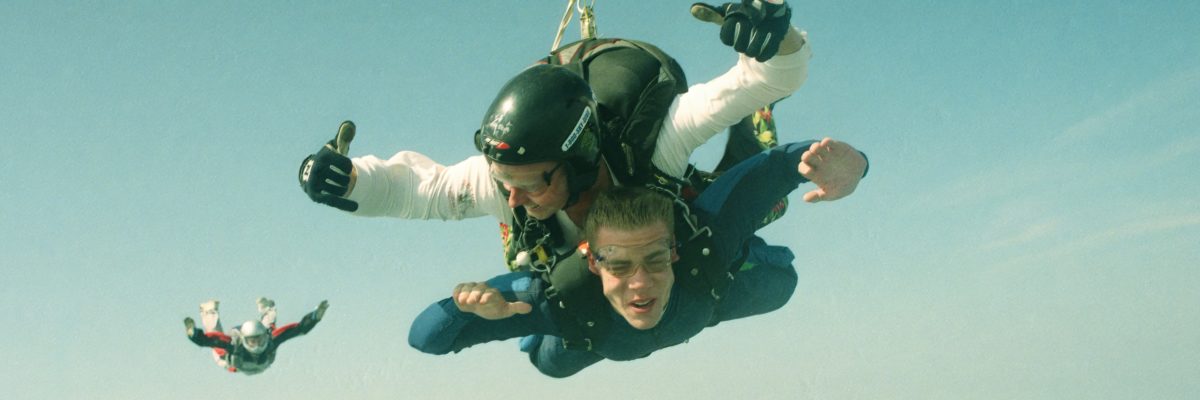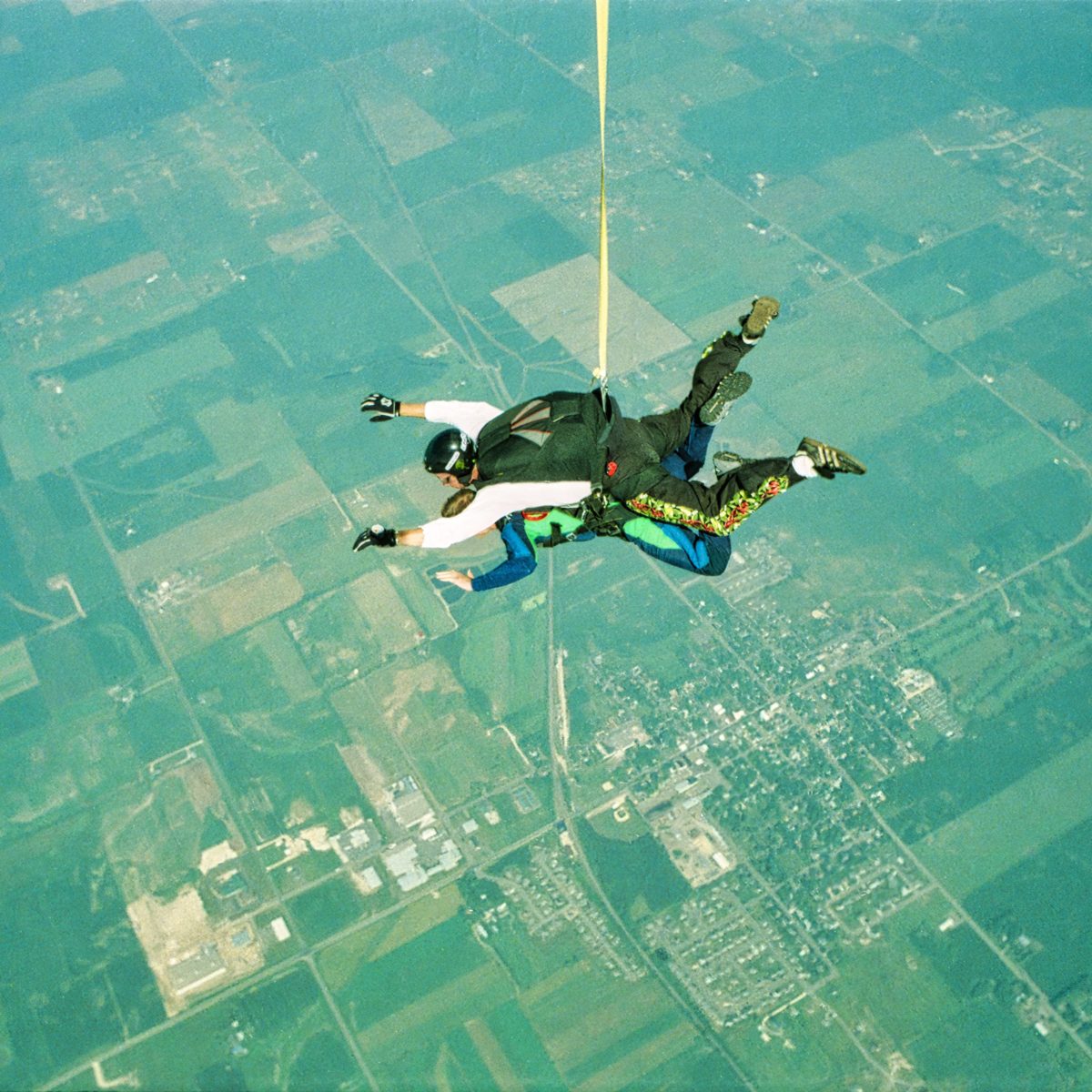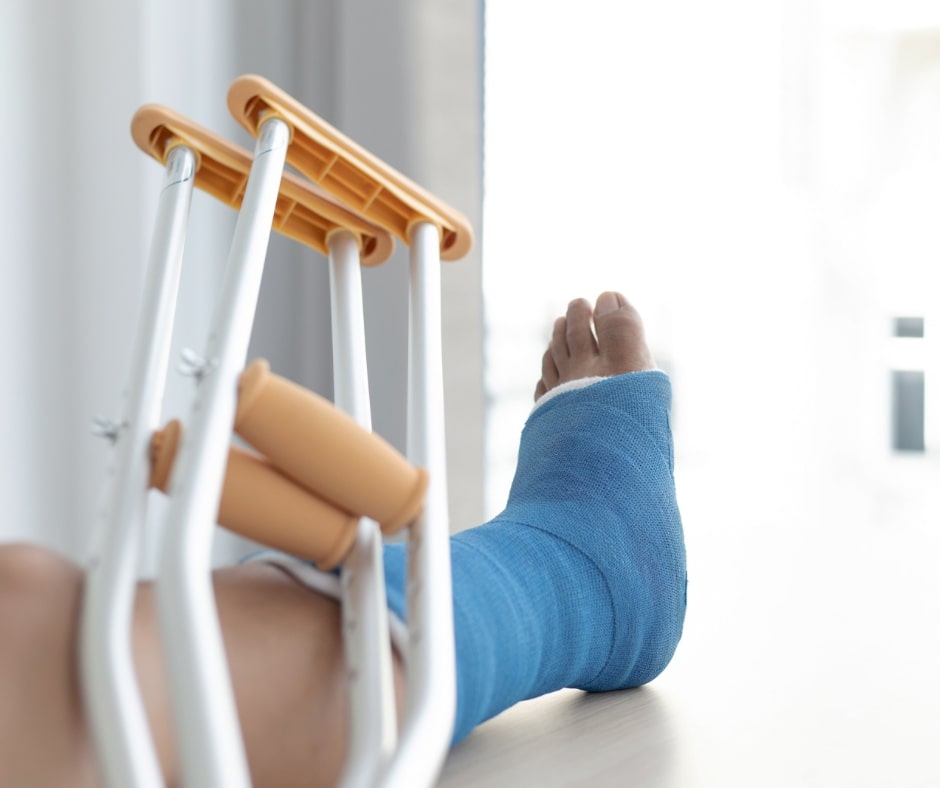
Skydiving Injuries And How To Avoid Them
Friday, October 28, 2022
- Team FlyXP
- 10/28/22
- 0
- Fun Jumpers, General, Skydiving injuries
As is the case for participants of any extreme sport, skydiving injuries can happen. Although contrary to what you may believe, skydiving injuries are fairly uncommon – and when skydiving injuries do occur, in most cases they are minor.
Before letting fear of skydiving injuries hold you back from this incredible experience, we think you should know the truth about skydiving injuries and a few critical tips for how to avoid being injured while skydiving.
Interested in learning more about skydiving injuries? Let’s get to it.
Better Tech = Less Skydiving Injuries
When civilian skydiving made its way to the scene, skydiving injuries were a dime a dozen. Folks were using any kind of surplus military gear they could get their hands on; there was no established training curriculum; and rules and regulations were practically unheard of. In the beginning, skydiving was like the lawless wild west!
Though there was a steep learning curve, with time and engineering innovation, the sport of skydiving evolved. Vast improvements were made to skydiving rigs, parachutes, emergency systems, and training curricula.
Jumpers went from jumping retired, home-modified military round parachutes, to specifically developed RAM-air canopies. Training became more thorough and regulated. Instructors were required to meet certain criteria to gain accreditation and the ability to instruct others. And, with the invention of the modern Automatic Activation Device, the scales steadily tipped in safety’s favor.
The research and development of skydiving tech hasn’t stopped, and with each passing year, the sport of skydiving is getting safer. Today, skydiving injuries are fairly rare — particularly in the case of tandem skydiving.
Tandem Skydiving = Impeccable Safety Record

Tandem skydiving, where you are attached to a licensed skydiving instructor, is one of the safest forms of introductory skydiving. In order to become a tandem skydiving instructor, an individual is required to have:
- Earned the United States Parachute Association D License (the highest licensure possible)
- Been in the sport of skydiving for at least 3 years and accrued a minimum of 500 skydives
- Previously obtained a USPA Coach Rating
- Secured an FAA Class III Medical certificate
Because a licensed skydiving professional is “in charge,” the rate of skydiving injuries for tandem skydiving is very low.
With tandem skydiving, the skydiving injuries that occur are usually minor and sustained during landing, with the most common skydiving injury being a sprained or broken ankle. Typically, skydiving injuries sustained on landing occur when the tandem student does not follow the pre-jump brief or the instructions given to them by the tandem instructor. Often, the tandem instructor will tell the tandem student to lift their legs for landing. If the student follows these instructions, they are far less likely to be injured during the landing.
Human Error Is Usually To Blame For Skydiving Injuries

Though the truth may be hard to face, it’s the truth nonetheless. In the case of skydiving injuries, the truth is that skydiving injuries tend to be the result of human error. The sport of skydiving is inherently risky, and fortunately, a whole lot safer than it used to be – but humans do make unsafe decisions while skydiving. Don’t want to end up with a skydiving injury? Check out our tips for avoiding skydiving injuries.
Tips for Avoiding Skydiving Injuries
Listen
You may think you know best, but when it comes to avoiding skydiving injuries, it’s important to listen to those with more experience than you. This includes your instructors, coaches, and the dropzone Safety and Training Advisor. They have plenty of knowledge to share and will often provide counsel and advice.
Know (And Respect) Your Limits
It’s important to accurately assess your own skill. Many choose to jump in conditions outside of their skill range, whether that be skydiving in high or gusty winds, jumping with larger groups before having the pre-requisite skill, or attempting skydiving maneuvers without proper training. It’s important not only to know your limits but also to respect them. Don’t endanger your own safety and increase your risk of skydiving injury just because someone else is pressuring you to do so.
Push Your Limits…Slowly!
Okay, so yes, we did just say to know and respect your limits, so what we say next will seem a little contradictory. In order to grow in the sport of skydiving, at times, you will need to push your limits. However, there is a right way and a wrong way to do this. Don’t rush the process. Take your time and consult with the individuals we mentioned in our first tip to ensure that you are on the right track.
Interested in skydiving for the first time but have concerns about skydiving injuries? Reach out! A chat with one of our helpful, knowledgeable staff might help you feel ready to take the leap!
Copyright © 2025, Skydive Paraclete XP, All Rights Reserved.
DropZone Web Design & Marketing by Beyond Marketing, LLC
